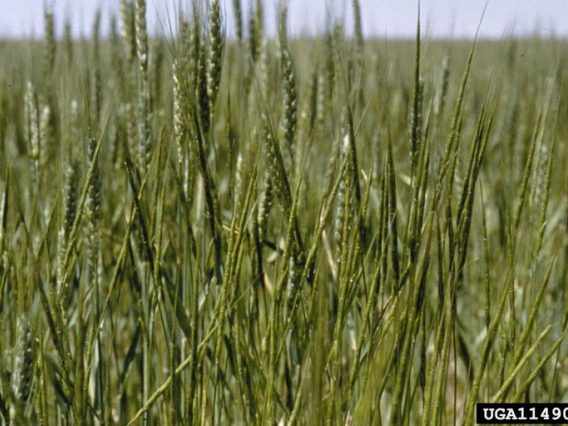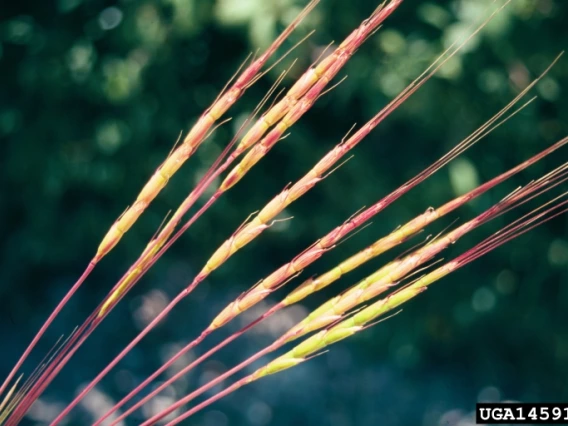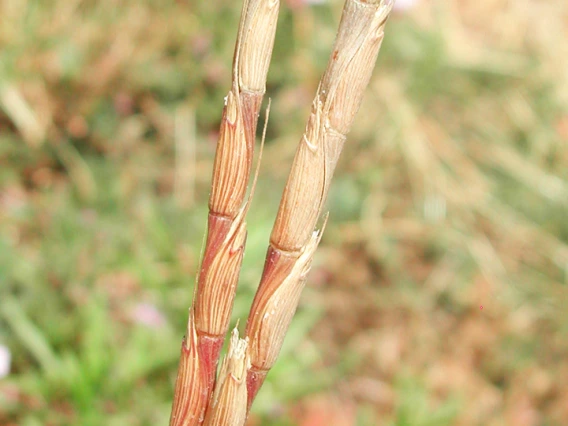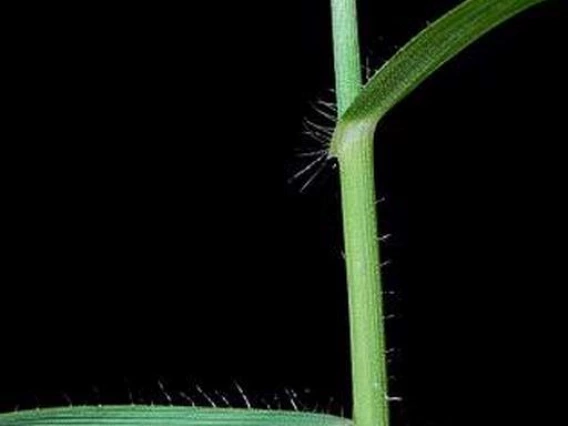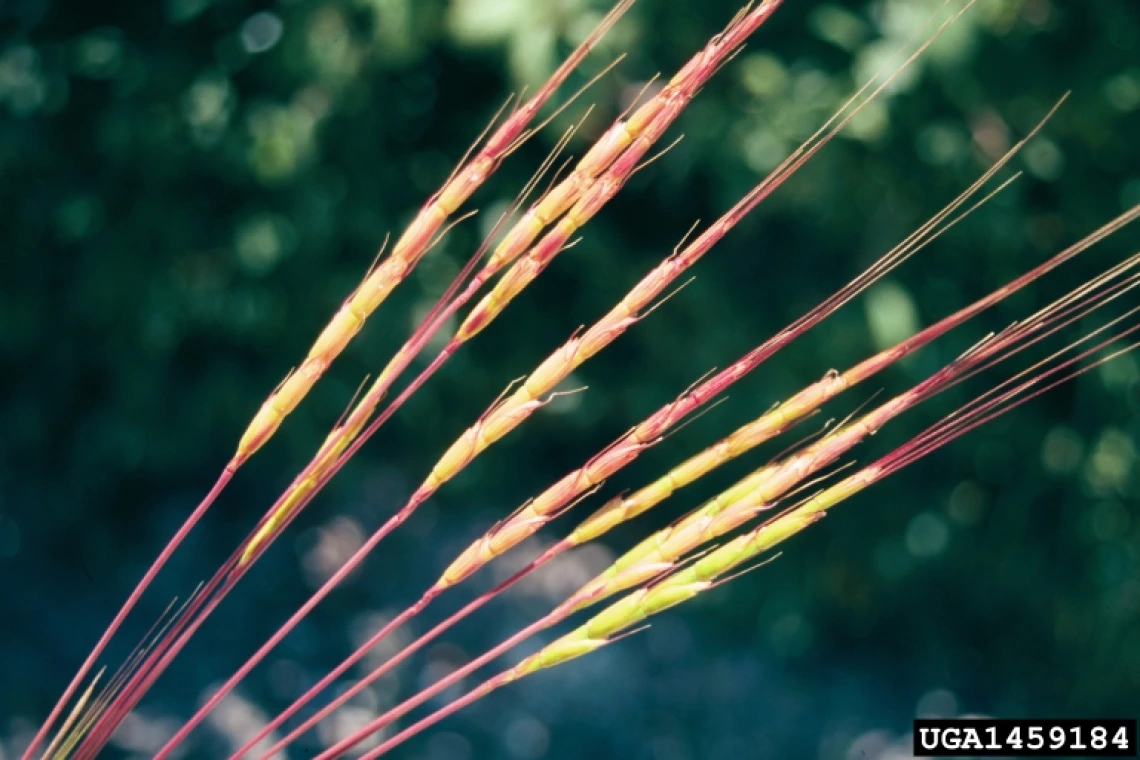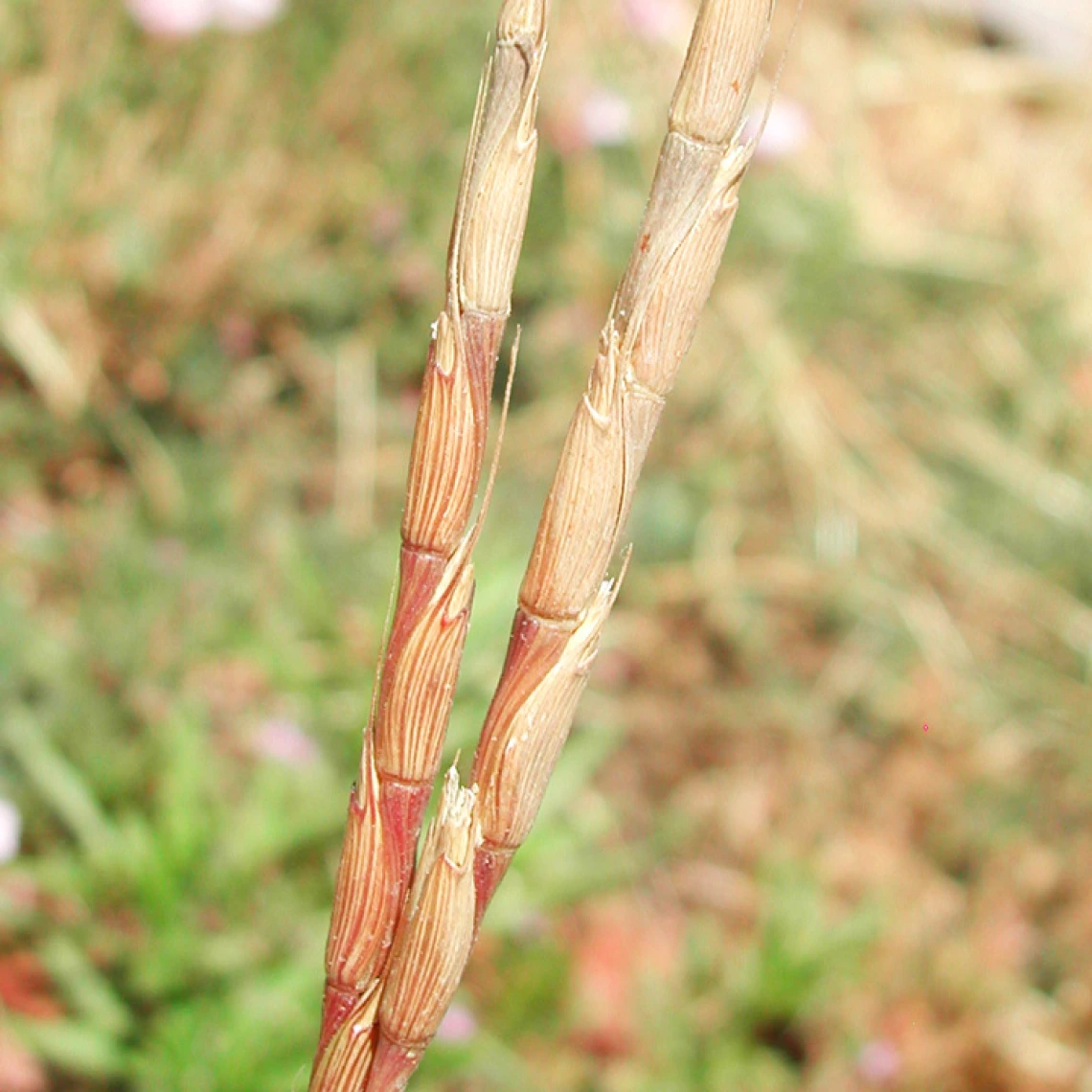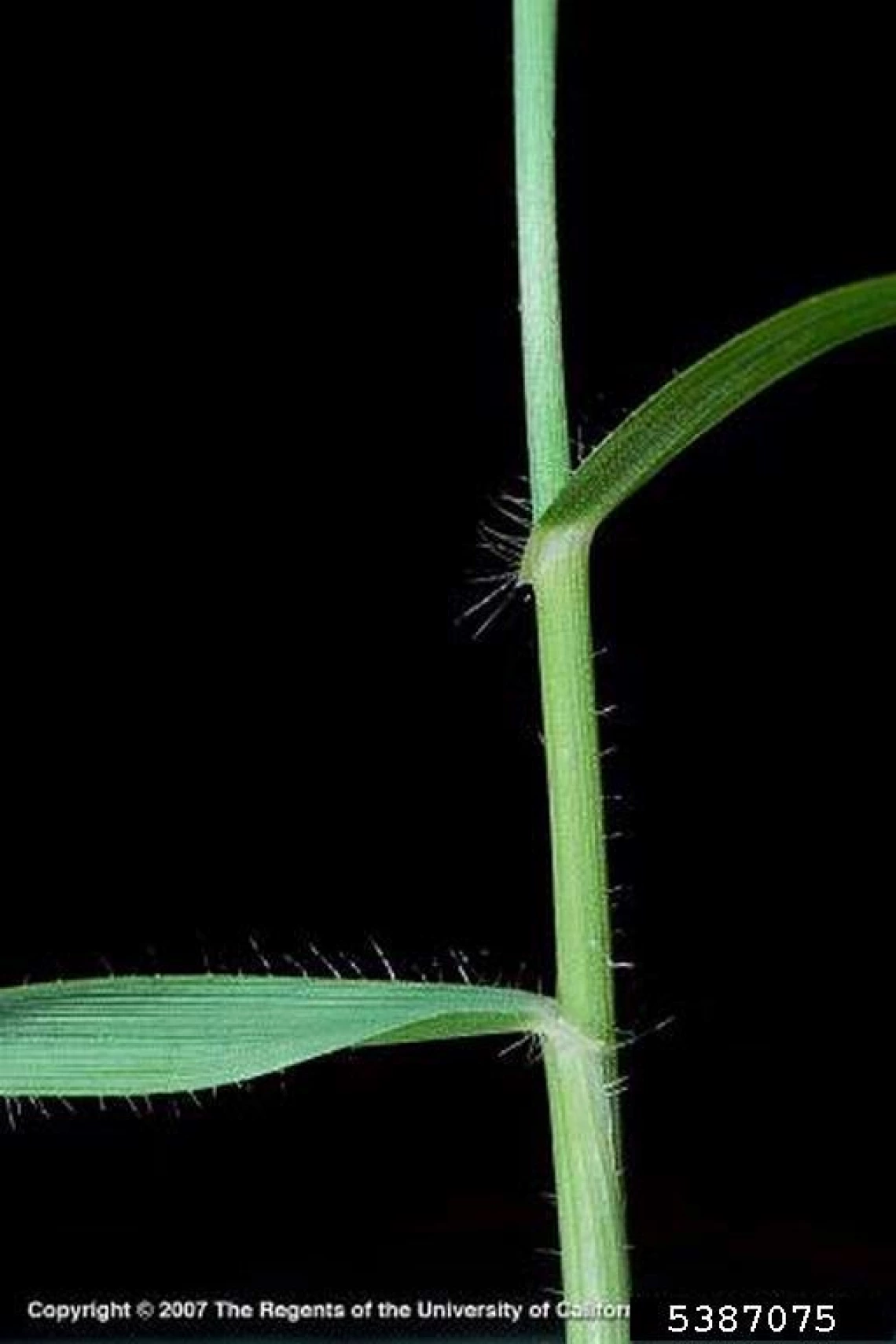Image
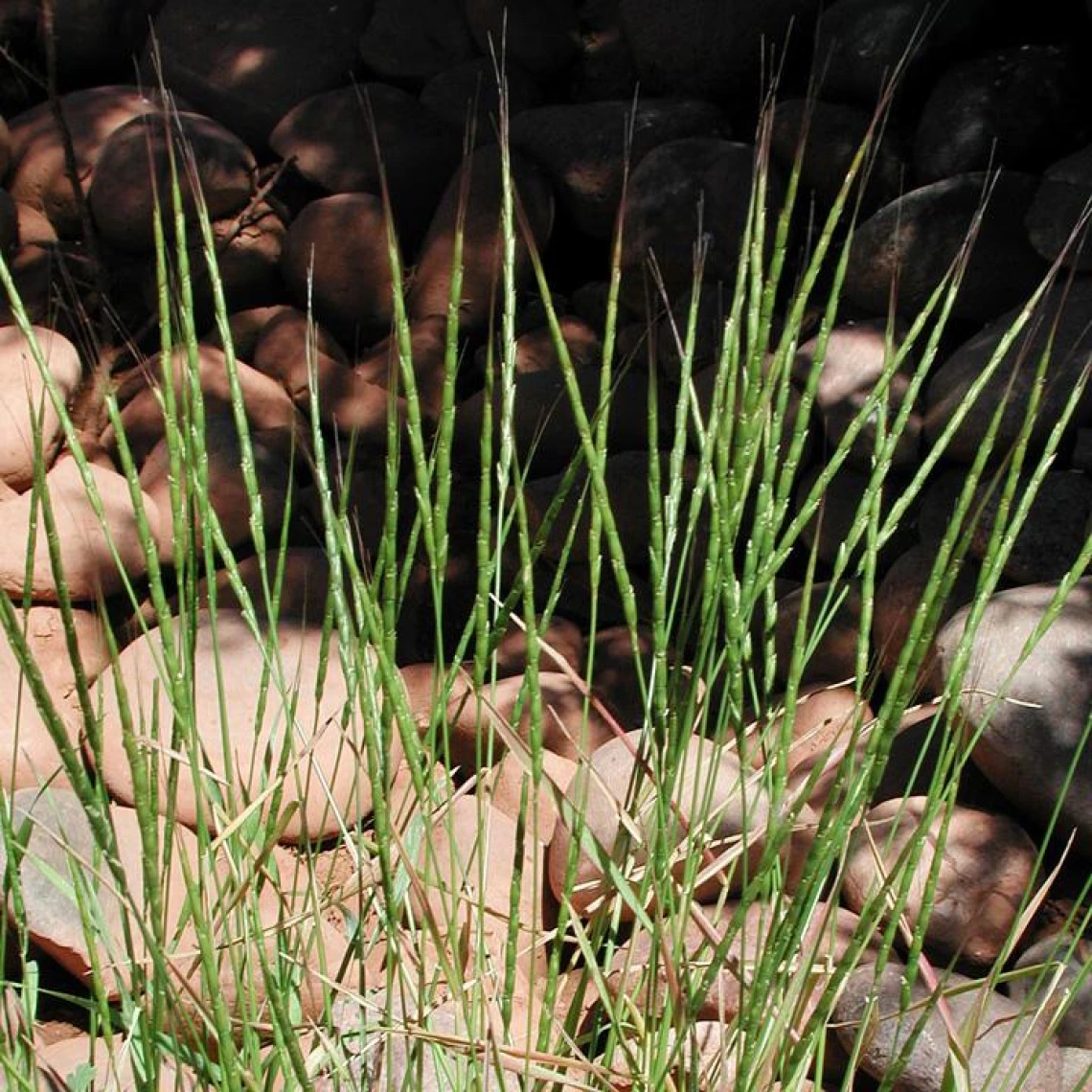
Jointed goatgrass
Max Licher, swbiodiversity.org/seinet
Common Name(s)
Jointed goatgrass
Scientific Name
Aegilops cylindrica
Family
Grass family (Poaceae)
Reasons for concern
This grass is considered a nuisance in landscapes, gardens and fields. It can outcompete more desirable species reducing native plant diversity and important wildlife and pollinator habitat. Sharp barbs can injure pets and humans.
Classification
Non-native. Categorized as a Class B noxious plant on the Arizona Noxious Weed list, meaning that it “may be a high priority pest for quarantine, control, or mitigation if a significant threat to a crop, commodity, or habitat is known to exist.”
Botanical description
Erect, late-maturing, spreading grass.
Leaves
Flat leaf blades, upto ¼ inch wide, alternate on stem. Sparsely hairy margins near base of blade.
Stem(s)
Round, hollow stems grow 10 to 20 inches tall, with one to many erect stems. At maturity, stems bend flat to the ground and sections break apart at joints. Spike appears reddish to yellow in May and June.
Seeds
Cylindrical spikes 1 to 5 inches long, at top of the stems contain 2 to 12 smaller sections, which are connected together at very visible joints. At maturity spikes turn reddish to purple and then dry to a straw color. Germinate mid-September to early November. Seeds can remain viable in the ground for 5 years.
Roots
Shallow, fibrous root system with tillers (or shoots) growing upright off the roots.
Native to
Southern Europe and Asia Where it grows: Roadsides, grasslands, waste areas, and pastures at elevations of 5,000 to 7,500 feet. In fields of winter wheat, where it is very serious problem for farmers.
Lifecycle
Winter annual
Reproduction
By seeds and by one or more tillers
Weedy Characteristics
Some seeds germinate immediately after they are shed. A single plant can produce up to 3,000 seeds. Their persistent thatch can suppress native species.
Control Strategies
Jointed goatgrass populations in the home landscape are not difficult to eradicate. Prevent plants from going to seed. They are very easy to pull out by hand. Try to get the roots. Be diligent. Use weed barrier cloth or heavy mulch, if appropriate to the site. Frequently monitor previous infestations for new growth. Plant desirable native species to outcompete invasives.
References
- Jointed goatgrass Noxious Weed Control Board, Washington State
- Jointed goatgrass Invasive Grasses, USDA Forest Service

